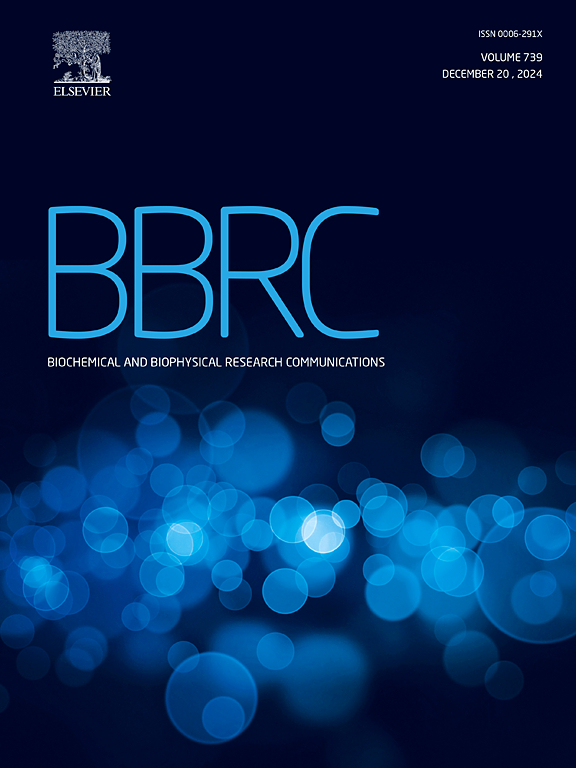杜克雷嗜血杆菌 NadV 催化 NMN 合成的结构基础
IF 2.5
3区 生物学
Q3 BIOCHEMISTRY & MOLECULAR BIOLOGY
Biochemical and biophysical research communications
Pub Date : 2024-10-29
DOI:10.1016/j.bbrc.2024.150889
引用次数: 0
摘要
NMN 是 NAD+ 生物合成过程中的一种前体物质,NAD+ 是一种在细胞内发挥关键作用的分子。补充 NMN 可以提高血液中 NAD+ 的水平,改善糖尿病、神经退行性疾病和癌症的症状,并具有抗衰老的功效。大肠杆菌通过异源表达烟酰胺磷酸核糖转移酶(Nampt),使重组大肠杆菌能够从烟酰胺中合成 NAD 衍生物。测定了 Nadv 与 NAM 和 NMN 复合物的三维结构,以探索 Nadv 催化 NMN 合成的分子机制。NAM 结合在两个位点:一个是催化位点,另一个是异生结合位点,而 NMN 只结合在催化位点。在这两个结构模型中,β15 和 β16 之间的环路缺失,这可能是由于其高度柔性导致电子密度弥散。与其他已解析的 Nampt 结构相比,在催化位点附近的 α-helix 12 后又发现了一个 12 氨基酸环。这项研究为 Nadv 的工程化奠定了基础,有助于其在生物合成 NMN 中的有效应用。本文章由计算机程序翻译,如有差异,请以英文原文为准。
The structural Basis of NMN synthesis catalyzed by NadV from Haemophilus ducreyi
NMN is a precursor in the biosynthesis of NAD+, a molecule that plays a crucial role within cells. Supplementation with NMN can elevate NAD+ levels in the blood, improving symptoms of diabetes, neurodegenerative diseases, and cancer, as well as providing anti-aging benefits. Escherichia coli was engineered to heterologously express nicotinamide phosphoribosyltransferase (Nampt), enabling the recombinant E. coli to synthesize NAD derivatives from nicotinamide. The 3D structure of Nadv complexed with NAM and NMN was determined to explore the molecular mechanism by which Nadv catalyzes NMN synthesis. NAM binds at two sites: one at the catalytic site and one at the allosteric binding site, while NMN binds exclusively at the catalytic site. In both structural models, a loop between β15 and β16 is missing, likely due to its high flexibility, leading to diffuse electron density. Compared with other resolved Nampt structures, an additional 12-amino-acid loop was identified after α-helix 12 near the catalytic site. This study lays the groundwork for the engineering of Nadv, facilitating its efficient application in biological synthesis of NMN.
求助全文
通过发布文献求助,成功后即可免费获取论文全文。
去求助
来源期刊
CiteScore
6.10
自引率
0.00%
发文量
1400
审稿时长
14 days
期刊介绍:
Biochemical and Biophysical Research Communications is the premier international journal devoted to the very rapid dissemination of timely and significant experimental results in diverse fields of biological research. The development of the "Breakthroughs and Views" section brings the minireview format to the journal, and issues often contain collections of special interest manuscripts. BBRC is published weekly (52 issues/year).Research Areas now include: Biochemistry; biophysics; cell biology; developmental biology; immunology
; molecular biology; neurobiology; plant biology and proteomics

 求助内容:
求助内容: 应助结果提醒方式:
应助结果提醒方式:


